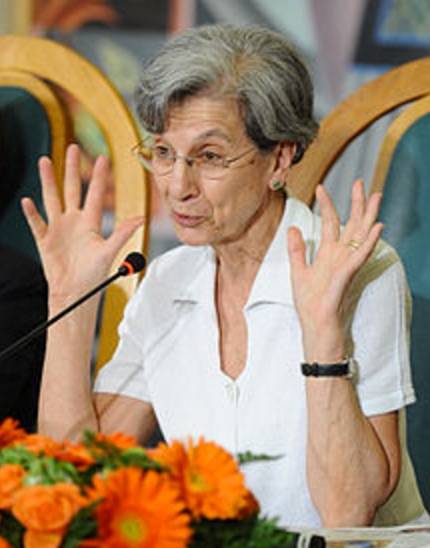However the Debate Ends, Italian Family is Changed
ROME -- The changes in attitude toward the family continue to top the Italian political agenda this week, with Parliament being forced to decide upon legalization of civil unions including same-sex unions. As the Senate debate on the Cirinnà bill on civil unions reopened today, it showed that no political deal has yet been made, and there are reports that Senate President Pietro Grasso may turn his back on his decision to disallow a secret ballot.
What do Italians think? One survey made in January showed that 74% of Italians are in favor of heterosexual civil unions (IPR Marketing survey, Jan 10, 2016). The same survey also indicated that 23% of Catholics queried support recognition of same-sex civil unions, by comparison with 70% of non-Catholics, for a total of 46% in favor, 40% against and 14% who would or could not respond.
Still, times and attitudes change, and Italy's official statistics-gathering agency Istat results show that 555,000 civil unions, heterosexual and other, already exist without benefit of the marriage law, or twice the number of ten years ago. At the same time, 1,200 Italian families are in de facto same-sex civil unions (not all of these involve love or sexual affairs, however; some are elderly individuals sharing households or students).
Whatever the outcome of the forthcoming vote, it is a fact that the Italian family has changed drastically in recent years. Istat -- the acroynm, dry as dust, stands for Istituto Centrale di Statistica, or Central Statistics Institute -- is one of Italy's most successful public agencies, which has rigorously studied Italian economic and social development for the scientific community for exactly 90 years. Most importantly, what experts call Istat "data production" also acts as a prime mover behind the decisions of policy makers, including upon the issues concerning the family.
Istat began functioning in 1926, bringing together a handful of agencies that had actually begun studying the country back in 1861, even before Italy was unified. Headquartered in Rome, Istat has a network of regional offices throughout the country. Governing it is a council and president; a committee which meets to decide upon focus; and an auditing branch that oversees the reliability of the statistics gathered. Results are available, free, via the media and Internet, to the press, politicians and scholars. Paid statistical compilations are also periodically available.
One of its periodic reports concerns the nation's Benessere Equo e Sostenibile (BES, for Equitable and Sustainable Well-being), which is a social variation on GNP. A crucial role, if sometimes underestimated by the general public, is the agency's studies of the impact which political decisions wreak over time upon Italian society. This makes it all the more important that the agency be independent, and that the evidence it presents be as objective as possible.
About half of its data production is information about the economy. Other aspects under systematic study are social change, the environment and the Italian territory itself, in order to encourage understanding of the productive structure of the country and its social reality: consumer attitudes and consumption, gender issues, poverty, and so on. Study of whither the Italian family is obviously high on the Istat agenda.
As Istat itself wrote in it recent report, "Farewell to the traditional Italian family, father-mother-at least two children: the family nucleus is shrinking ever more, and today the national median is 2.4 persons. Partly because of the aging population, almost one out of three families is now composed of a single person (31.2%), against the tiny 5.7% of families of at least five individuals. Confirmation that there exists a new Italian family and now ex-family Italy emerges from the definitive data of the most recent population census." (For results of this census of the Italian family, published in 2014, see Istat at >>)
Another novelty, according to Istat: The new Italians, and in particular migrants from Maldavia and the Ukraine, rose by 135% in ten years, with two-thirds of these female. At least 7.4% of Italy's families include at least one foreigner, for an increase of 172% in the decade 2001 - 2011, the latest available statistic.
One of the country's foremost experts on sociology of the family is Professor Chiara Saracena of the Universities of Berlin and Turin. Saracena considers the traditional family unit in crisis in Italy as elsewhere in Europe. As she has said in interviews, the family is a space of diversity and complexity, inhabited by diverse individuals, who are constantly in a dialogue with each other. "They inhabit this space, and must confront themselves with another diversity, society outside the family." For this reason relations between family and society often lack balance, and so, "Every society develops laws and its own ways of sustaining the family."
"Today different kinds of couples are taking shape, which have a family dynamic that does not fit into the classic form. The problem is that the family is not immutable in time and space," Saracena told Corona Perer for the newspaper "Sentire." She was ahead of her time, as that interview back in 2008 shows.



































i-Italy
Facebook
Google+
This work may not be reproduced, in whole or in part, without prior written permission.
Questo lavoro non può essere riprodotto, in tutto o in parte, senza permesso scritto.